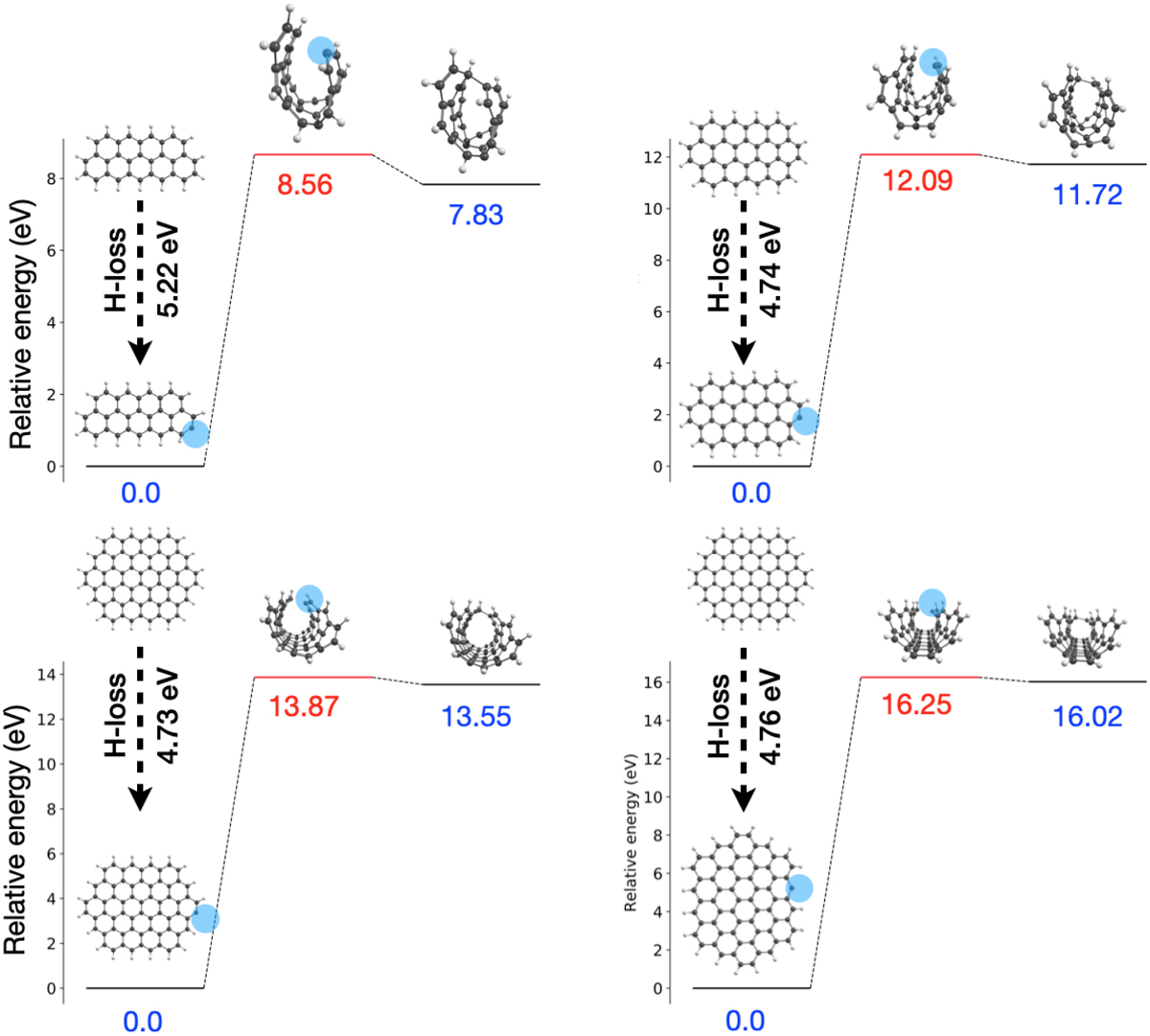Fig. 2

Calculated dissociation energies and molecular bending barriers of pentacene (a linear molecule), C31 H15 (a two-row molecule), C40H16 (a three-row molecule), and circumovalene. The dissociation energy for removing a terminal side hydrogen atom from these molecules is about 4.8 eV. The molecular bending barrier increases from ~5.5 to ~13.9 eV as the number of rows increases. For ovalene, two different bending pathways, depending on the position of H loss (denoted with a yellow circle), are investigated. The barrier increases from ~13.9 eV for the loss of a duo-hydrogen to ~16.3 eV for the loss of a solo-hydrogen.
Current usage metrics show cumulative count of Article Views (full-text article views including HTML views, PDF and ePub downloads, according to the available data) and Abstracts Views on Vision4Press platform.
Data correspond to usage on the plateform after 2015. The current usage metrics is available 48-96 hours after online publication and is updated daily on week days.
Initial download of the metrics may take a while.


